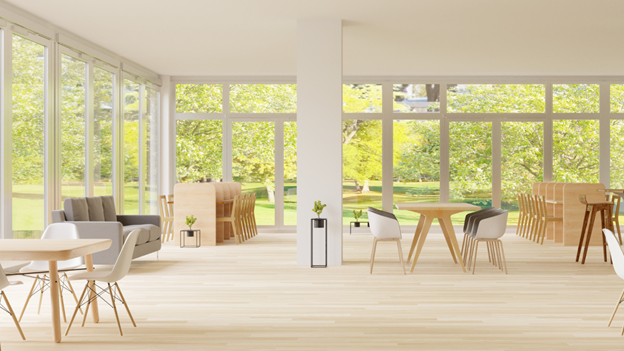The digital transformation of society has extended far beyond private enterprise—it is now reshaping how public institutions operate, communicate, and serve. As citizens grow accustomed to the convenience and efficiency of digital platforms, civic architecture is undergoing a parallel evolution. From city halls to libraries and municipal service centers, civic spaces are being reimagined to support hybrid infrastructure—a seamless blend of in-person functionality and digital engagement. This new paradigm calls for architects to think not only in terms of form and material but also in terms of bandwidth, interactivity, and adaptability.
The Rise of Hybrid Civic Engagement
The COVID-19 pandemic accelerated an already-growing trend toward remote and digital access to government services. Public meetings moved to Zoom, permit applications went online, and entire communities engaged in civic life from their living rooms. What was once a temporary necessity has proven to be a preferred mode of interaction for many.
Today’s civic architecture must reflect this shift. Buildings can no longer be designed solely for physical occupancy; they must serve as hybrid portals—places where physical presence and digital access are equally valid forms of civic participation. This includes designing spaces that accommodate live streaming, virtual service kiosks, online voting hubs, and flexible areas for both digital and analog engagement.
Spatial Design for a Connected Public
Integrating digital infrastructure into civic spaces requires more than installing a few screens or setting up a Wi-Fi network. Architects must consider how technology impacts space, experience, and inclusivity. For example, public lobbies and community rooms are increasingly designed as “digital commons,” with touchscreens for accessing services, virtual queueing systems, and dedicated zones for tele-counseling or digital learning.
Sound insulation, lighting conditions, and acoustic zoning have taken on new importance, especially in buildings that house both in-person consultations and video conferencing services. Flexible furniture systems and modular walls support evolving public health guidelines, as well as shifting patterns of occupancy and use.
Libraries, often at the forefront of civic innovation, are leading the way. Many now include podcasting studios, virtual reality labs, remote tutoring pods, and content creation stations alongside traditional stacks and study rooms. These hybrid offerings blur the lines between access to knowledge and access to technology—making the building a tool in itself.
Transparency, Trust, and Technology
As civic architecture adapts to include more digital interfaces, it must also respond to questions of trust, equity, and accessibility. Public buildings have long served as symbols of transparency and democracy. Now, digital interfaces must be held to the same standard.
This means designing spaces that communicate openness and inclusivity, even through screens. Digital kiosks and portals should be positioned prominently and designed for universal access—accounting for visual, cognitive, and physical impairments. Signage, navigation, and support staff must be integrated thoughtfully to avoid creating barriers for those unfamiliar with digital systems.
Moreover, the architecture itself plays a role in legitimizing the virtual. When a room is built for live streaming town hall meetings or broadcasting court sessions, it affirms the importance of those digital interactions. Material choices, lighting, backdrop composition, and acoustics all influence how public authority is conveyed in a hybrid world.
Infrastructure That Evolves
One of the defining challenges of integrating hybrid infrastructure into civic architecture is future-proofing. Technology evolves faster than buildings do, so architects must design with flexibility in mind.
Raised access floors, reconfigurable data ports, redundant power systems, and scalable server rooms are now standard considerations. More than just technical features, these infrastructural decisions shape the architectural language of civic buildings, giving form to a new era of adaptability.
Green infrastructure is also part of this evolution. As governments adopt smart city technologies—traffic sensors, environmental monitors, AI-powered energy systems—civic buildings serve as both data hubs and educational platforms. Displaying this information through public dashboards or interactive walls can reinforce a building’s civic purpose while promoting transparency and public awareness.
Creating Civic Space in the Cloud
A provocative question now arises: What is a civic space when it’s virtual? Architects must engage with the idea that digital platforms are not just tools—they are environments. A city’s website, a library’s learning portal, or a public agency’s mobile app must be designed with the same care, intention, and identity as its physical spaces.
Though graphic designers and UX specialists often lead digital design, architects have a unique role to play. By applying spatial thinking to the user journey, they can help create coherence between the built environment and its virtual extensions. This might mean advising on the tone of interface design, mapping digital “entry points,” or coordinating visual branding between screens and spaces.
Toward a Civic Architecture of the Future
The future of civic architecture lies in its ability to bridge worlds—physical and digital, historical and forward-thinking, accessible and secure. In this landscape, buildings are no longer static containers of government—they are dynamic platforms for public interaction.
As architects rethink civic form in the age of virtual engagement, their work must encompass bandwidth and bricks, cloud and concrete. The goal is not to replace public space but to extend it, ensuring that everyone—regardless of location, ability, or preference—can participate fully in civic life.
This shift is already redefining the conversation around civic architectural design trends, where innovation is measured not only in aesthetics or sustainability, but in how well a building empowers its public—both in person and online.

